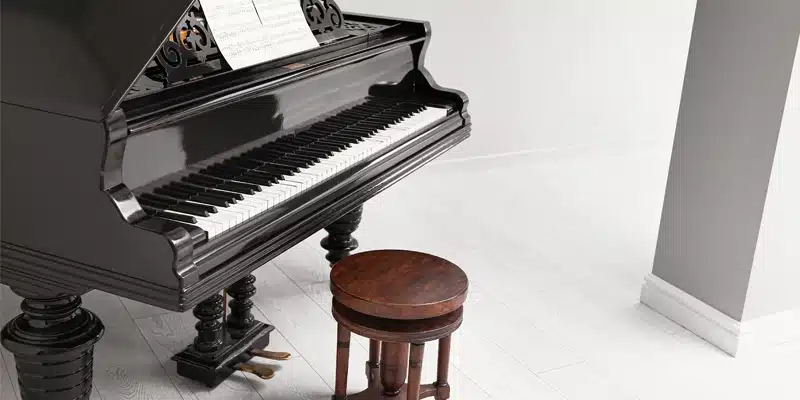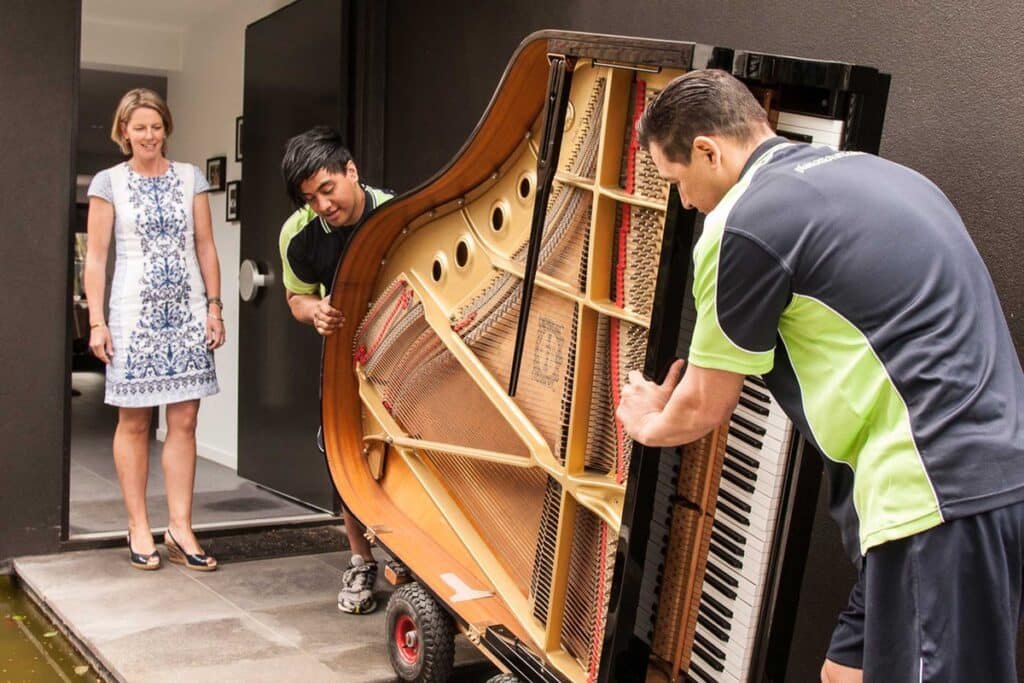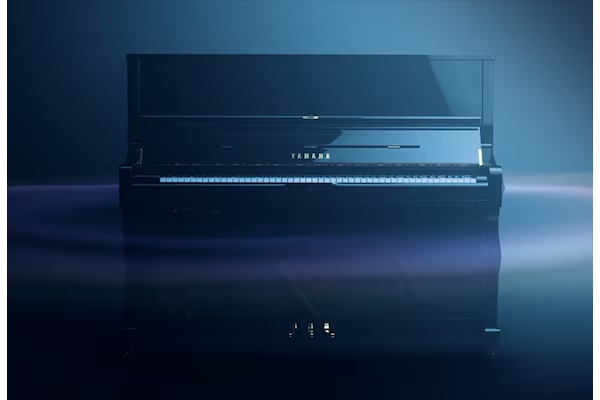Moving a grand piano is an extraordinary feat of logistics, strength, and precision. It’s a task that strikes fear into the hearts of many, and for good reason. These magnificent instruments are not just incredibly heavy – often weighing between 500 and over 1,000 pounds – but also possess an intricate and delicate internal mechanism, a polished, easily scratched exterior, and an awkward, unbalanced shape. The notion of how to move a grand piano safely and efficiently is a complex challenge that should never be underestimated or attempted without professional expertise.
At Top Town Movers, serving discerning clients across Ontario, particularly in the North York area, we understand the profound value and fragility of a grand piano. It’s not just a piece of furniture; it’s a cherished instrument, often an heirloom, representing a significant investment and holding immense sentimental value. Our teams are specially trained and equipped to handle such delicate and demanding relocations, ensuring your grand piano arrives at its new home in pristine condition. This comprehensive guide will delve into the meticulous process of how to move a grand piano professionally, highlighting the strategies, specialized equipment, and critical safety measures involved,
- Learn More >>>>How To Move a 500 Pound Piano By Yourself
The Art of Moving a Grand Piano: Safety, Strategy, and Professional Expertise
Why Moving a Grand Piano Requires Specialist Knowledge and Equipment
The unique challenges of moving a grand piano stem from several inherent characteristics:
- Extreme Weight: Grand pianos range from smaller baby grands (around 500-600 lbs) to concert grands (over 1,200 lbs). This sheer weight makes manual handling without proper equipment incredibly dangerous.
- Uneven Weight Distribution: The cast-iron harp, which holds the tension of the strings, accounts for a significant portion of the piano’s weight and is located primarily on one side, making the instrument inherently unbalanced and prone to tipping.
- Fragile Components: The soundboard, strings, hammers, and pedal mechanism are all highly susceptible to damage from jarring movements, impacts, or incorrect handling. Even slight internal shifts can throw off tuning or cause mechanical failures.
- Delicate Exterior: Grand pianos typically feature highly polished, often lacquered, finishes that are easily scratched, dented, or chipped. The legs and pedal lyre are also vulnerable.
- Awkward Shape and Size: Their large, irregular dimensions make them difficult to maneuver through doorways, hallways, around corners, and up or down stairs.
Attempting to move a grand piano without the specialized knowledge and equipment means risking severe personal injury (back injuries, crushed limbs), irreparable damage to the piano itself, and extensive damage to your property (gouged floors, scraped walls, broken railings). This is why Top Town Movers always advocates for professional piano moving services.
- Learn More >>>>Moving a 600 pounds Steinway Piano Upstairs
The Meticulous Process: How Professionals Move a Grand Piano
The safe relocation of a grand piano is a multi-stage operation that demands precision, coordination, and the right tools.
1. Pre-Move Assessment and Planning
Before any physical lifting begins, our team conducts a thorough assessment:
- Piano Type and Dimensions: Confirming whether it’s a baby grand, parlor grand, or concert grand, as this dictates the size of the skid board and the number of movers required.
- Detailed Route Survey: We meticulously measure all access points: doorways, hallways, stairwells, landings, and elevator dimensions at both the origin and destination.
- Obstacle Identification: We identify and plan for any potential challenges such as narrow turns, uneven flooring, steps, delicate floor coverings, or fragile wall fixtures.
- Environmental Protection: Determining where floor runners, wall protection, and door frame padding will be strategically placed to prevent property damage.
- Disassembly Plan: Outlining which parts of the piano need to be disassembled (legs, pedal lyre, music rack, lid) and the sequence of these actions.
2. Specialized Equipment for Piano Moving
The right tools are indispensable for safely moving such a heavy and delicate instrument.
- Piano Skid Board (or Piano Board): This is the cornerstone of grand piano moving. It’s a heavy-duty, reinforced, carpeted, wooden or metal flat board designed to support the piano’s weight evenly once it’s on its side. It often has slots or holes for strapping.
- Piano Dolly: A specialized, low-profile, heavy-duty dolly with non-marking, sturdy wheels. The skid board with the piano strapped to it is then placed on this dolly for rolling.
- Heavy-Duty Moving Blankets/Quilted Pads: Numerous thick, padded blankets are used to meticulously wrap every surface of the piano.
- Professional-Grade Straps/Ratchet Straps: Extremely strong straps are used to securely fasten the piano to the skid board and then to the interior of the moving truck.
- Piano Moving Straps/Harnesses: These are specialized straps designed to loop under the piano (when lifted briefly) and over the shoulders of the movers, allowing them to utilize powerful leg muscles and distribute the weight more effectively.
- Gator Glides/Floor Protection: Heavy-duty floor runners or glides are used to protect hardwood floors, tiles, and carpets from scratches and indentations during movement.
- Tools for Disassembly: Wrenches, screwdrivers, and any specialized tools required for removing legs and the pedal lyre.
- Shrink Wrap: Used to secure padding in place and provide an extra layer of protection against dust and moisture.
- Learn More >>>>piano moving New Market

3. Preparing the Grand Piano for Movement
This is a critical, multi-step process to protect the instrument’s integrity and finish.
- Lock the Keyboard Lid: The lid over the keys is gently closed and locked. If no lock exists, a soft, non-abrasive material is placed over the keys, and the lid is secured with painter’s tape or a small strap (never directly on the finish) to prevent it from flying open.
- Remove the Music Rack: The music rack is often detachable and should be removed, wrapped in a blanket, and packed separately.
- Remove the Main Lid (Optional but Recommended): For larger grand pianos, the main lid can be removed. It’s then carefully wrapped in blankets and transported separately, often on edge.
- Disassemble Legs and Pedal Lyre: This is perhaps the most distinctive step for grand pianos.
- The piano is gently lifted on one side, typically by 3-4 movers, just enough for one leg to be unbolted.
- Once a leg is removed, a mover will quickly slide the piano skid board underneath that side of the piano.
- The piano is then carefully tilted further onto its side, resting on the skid board.
- The remaining two legs and the pedal lyre (the structure holding the pedals) are then unbolted and removed.
- All detached parts (legs, pedal lyre, bolts, screws) are immediately wrapped individually in moving blankets or bubble wrap, clearly labeled, and placed in a designated box or bag for hardware.
- Pad the Piano: Once the piano is resting securely on its side on the skid board, the entire instrument is meticulously wrapped in multiple layers of heavy-duty moving blankets. Special attention is given to the curved side, edges, and corners. These blankets are then tightly secured with large amounts of industrial-strength shrink wrap or packing tape (applied to the blankets, never the piano’s finish). The goal is to create a robust, padded cocoon around the piano.
- Strap to the Skid Board: The heavily padded piano is then securely strapped to the piano skid board using heavy-duty ratchet straps. This prevents any movement between the piano and the board during transit.
- Learn More >>>>how to move a piano across the room
4. The Grand Piano Movement: Technique and Coordination
This phase demands extreme care, precise communication, and synchronized effort from the moving team.
- Placement on Dolly: The piano (secured to its skid board) is carefully placed onto the specialized piano dolly.
- Maneuvering: The team, typically 3-4 movers for most grand pianos, works in unison to guide and push the piano dolly.
- Through Doorways: The piano is angled and pivoted with extreme care, often rotated on its short end to clear tight door frames. Walls and doorframes are protected with padding.
- Over Thresholds/Uneven Surfaces: Extreme caution is used to avoid jarring impacts. The piano is gently lifted slightly off the ground by the team to clear obstacles or navigate slight changes in elevation.
- Stairs (The Ultimate Challenge): Moving a grand piano up or down stairs is the most complex part of the process and requires highly specialized training.
- A larger team is typically needed (often 4-6 movers).
- Special piano moving straps and harnesses are employed.
- Maneuvers involve controlled tilts, pivots, and slow, step-by-step movements. The weight distribution is constantly managed by the team, with one or two movers often taking the brunt of the weight at the lower end (when moving downhill) or leading the lift (when moving uphill), while others provide balance and support.
- Communication is constant: “One, two, three, lift,” “Hold,” “Pivot left/right.” Every movement is coordinated.
- Loading onto the Truck:
- A robust, low-angle ramp is extended from the moving truck.
- The piano, still on its dolly and skid board, is slowly and carefully rolled up the ramp into the truck. This requires significant pushing power from the team.
- Inside the truck, the piano is positioned securely against a solid wall, typically at the front of the truck.
- It is then heavily strapped to the truck’s tie-down points using multiple ratchet straps, ensuring it cannot shift an inch during transit. No other items are placed in a way that could shift and impact the piano.
5. Unloading and Reassembly at the New Home
The process is reversed at the destination, with the same level of care and precision.
- Protected Path: Just as at the origin, the route inside the new home is protected with floor runners and wall padding.
- Careful Unloading: The piano is meticulously rolled down the ramp and guided into the house.
- Precise Placement: It is then carefully maneuvered into its final desired location within the room.
- Unwrapping and Reassembly: Once in place, the protective blankets and straps are removed. The legs and pedal lyre are carefully reattached.
- Professional Tuning: It is highly recommended to have a professional piano tuner assess and tune the piano a few weeks after the move, as temperature, humidity, and even the careful vibrations of transport can affect its tuning.

- Learn More >>>>piano movers near me
Why Top Town Movers is Your Trusted Partner for Moving a Grand Piano
Attempting to move a grand piano is a task that should never be undertaken lightly, especially not in minutes. The risks are too high, and the potential for costly damage or severe injury is immense.
At Top Town Movers, serving the North York area and throughout Ontario, we pride ourselves on being the experts in handling such challenging relocations. When you choose us, you benefit from:
- Highly Trained and Experienced Piano Crews: Our movers undergo specific training for handling grand pianos, understanding their unique balance points and vulnerabilities.
- Specialized, State-of-the-Art Equipment: We invest in the best piano boards, dollies, straps, and protective padding to ensure maximum safety.
- Comprehensive Insurance and Valuation Coverage: We provide robust protection plans for your valuable instrument, offering peace of mind.
- Meticulous Planning and Execution: Every grand piano move is treated as a unique project, with detailed planning to navigate every obstacle.
- Damage-Free Guarantee (to property): We take extreme precautions to protect your floors, walls, and doorways during the entire process.
Your grand piano is more than just an object; it’s a part of your life’s symphony. Trust the professionals at Top Town Movers to orchestrate its safe and seamless relocation,allowing you to simply enjoy its music in your new Ontario home. Sources

































